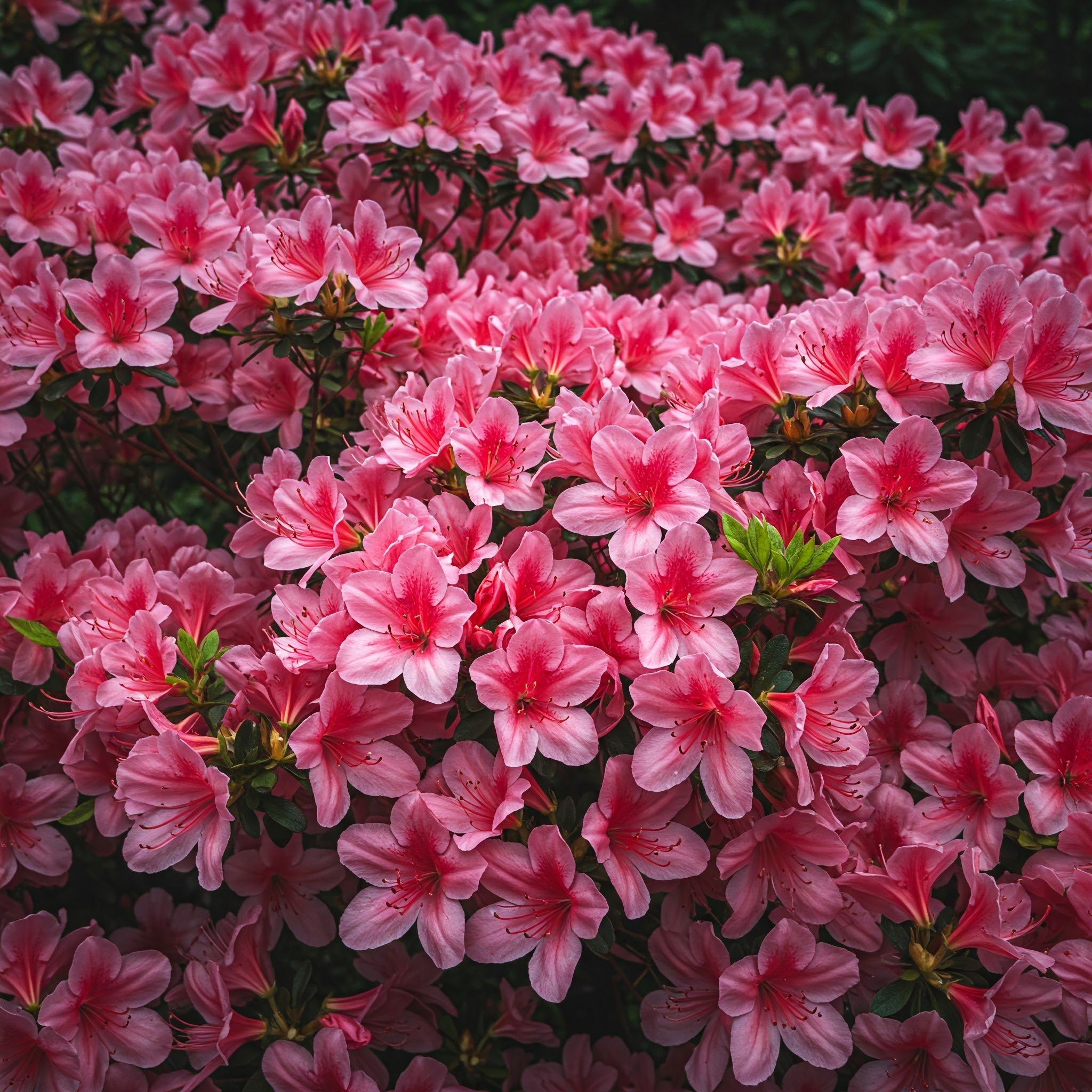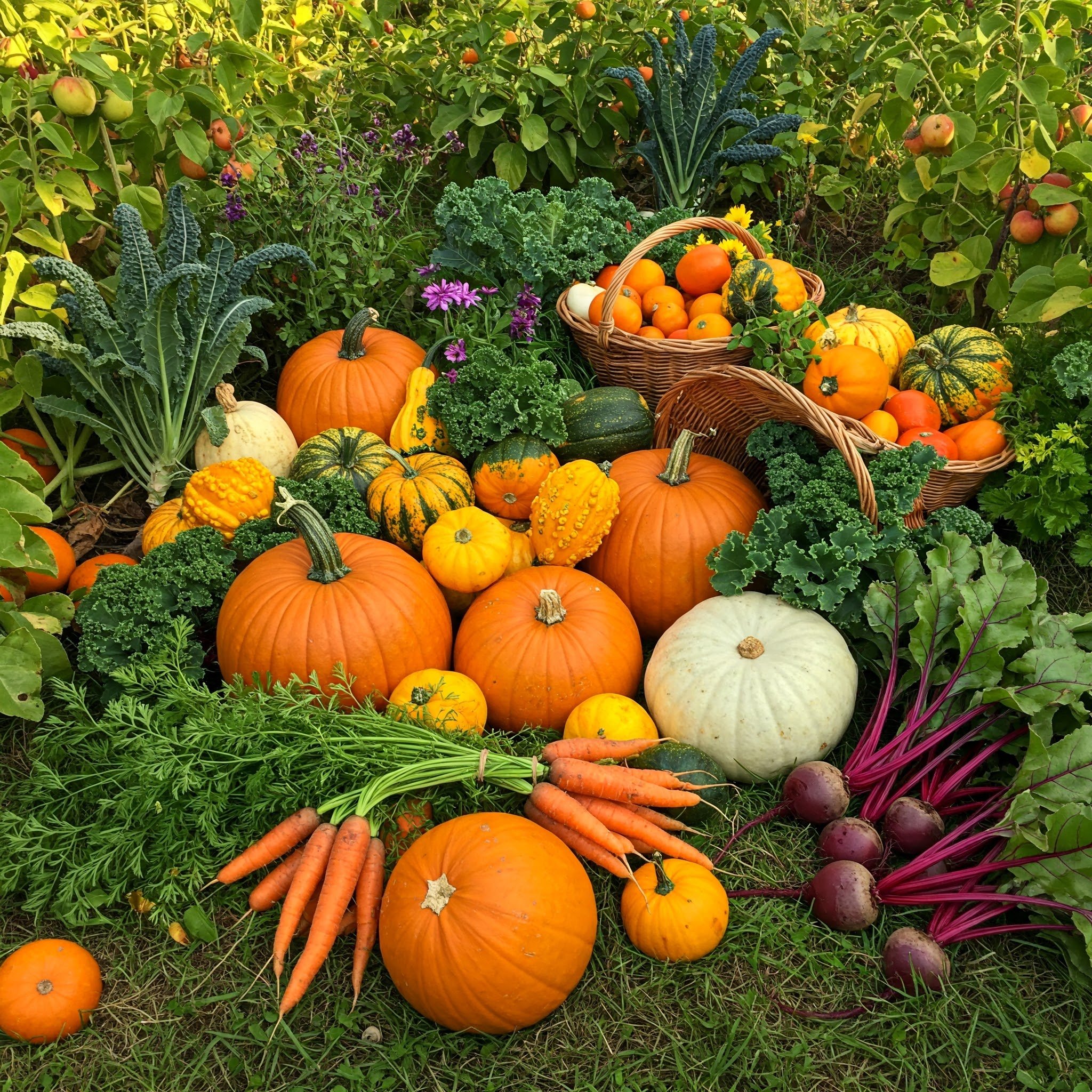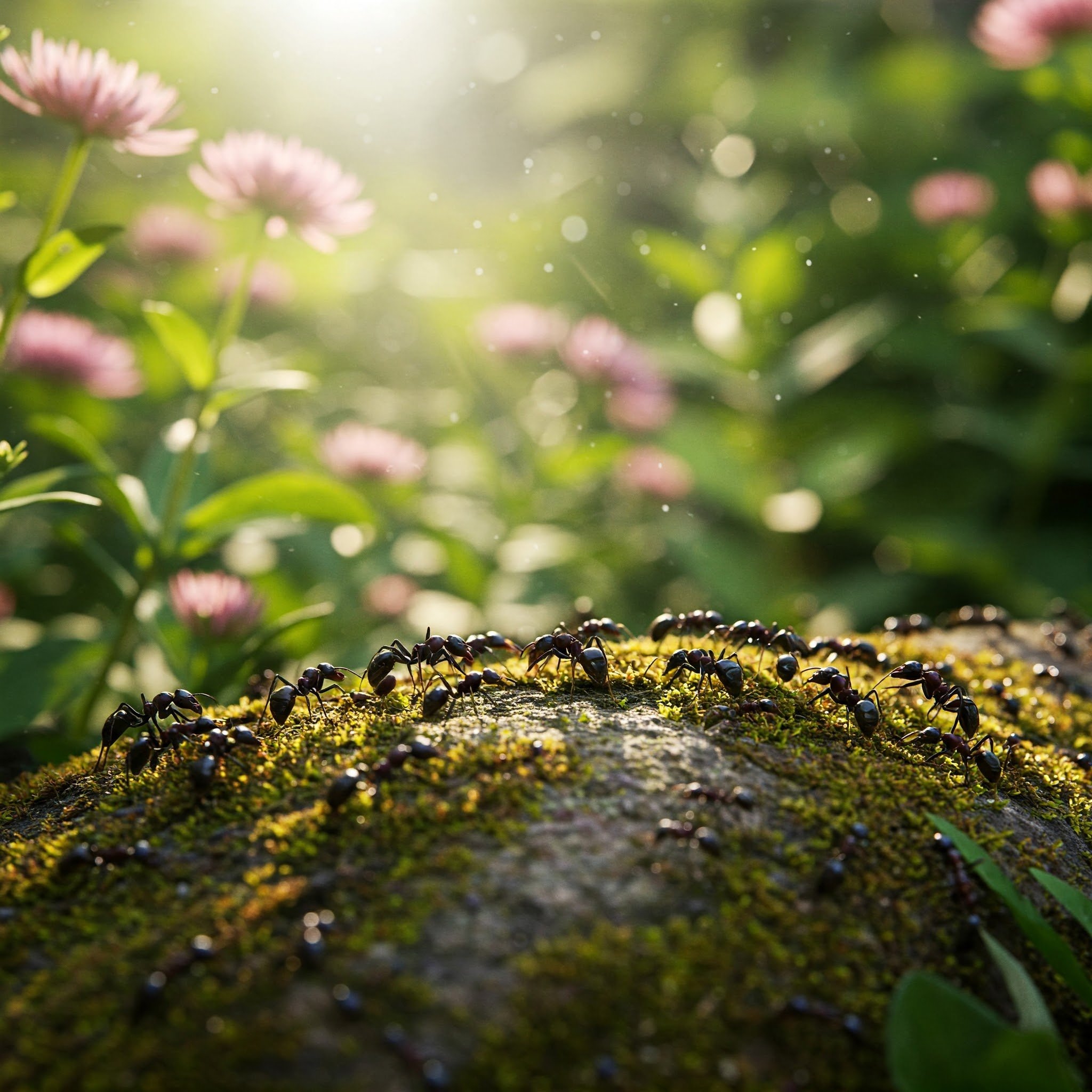Are Azaleas Perennials or Annuals? Find Out Here
Wondering if azaleas are perennials or annuals? Find out here! Dive into our extensive guide for cultivating healthy, vibrant azaleas—from choosing the right variety to mastering seasonal care.
Have you ever strolled through a neighbor’s yard in early spring and practically dropped your jaw at the sight of a massive, kaleidoscopic floral display? Chances are good those radiant blooms belonged to azaleas—those enchanting shrubs that can transform even the humblest of front lawns into a fairytale landscape. But here’s the burning question many new (and even seasoned) gardeners keep asking: Are Azaleas Perennials or Annuals? Find Out Here once and for all, because the answer might just spark a brand-new love affair with these captivating plants.
Azaleas, which come in countless shapes, sizes, and colors, belong to the genus Rhododendron. They’re a sight for sore eyes in spring, painting gardens with clusters of delicate, often trumpet-shaped flowers. But there’s more than meets the eye! In this guide, we’re gonna dish on everything you need to know—yes, from the million-dollar question of whether azaleas are perennials or annuals, all the way to foolproof care tips that’ll have you nursing your azaleas into gloriousness year after year. And trust me, these tips aren’t rocket science, so you won’t need a horticulture degree to see stunning results.
Let’s dive right in, shall we?
1. A Brief History: Where Did Azaleas Come From, Anyway?
Before we jump headfirst into whether azaleas are perennials or annuals, it helps to understand their roots—quite literally and figuratively. Azaleas have been captivating plant lovers for centuries, with historic ties to East Asia, Europe, and North America. Though widely cultivated nowadays, many azalea species originally hailed from countries like Japan and China, where they’ve been revered in ornamental gardens, spiritual temples, and private courtyards for ages.
1.1 Global Popularity
Over time, explorers and botanists introduced these Asian beauties to Europe and North America. By the mid-1800s, selective breeding and hybridization exploded in popularity, resulting in a dazzling assortment of azalea cultivars that could thrive under diverse conditions. Fast-forward to today, and you’ll find azaleas sprucing up landscapes in climates as varied as the sultry American South to the chillier regions of Northern Europe.
1.2 Cultural Significance
Azaleas aren’t just another pretty face, either. They’ve taken on various symbolic roles in different cultures. In some parts of Asia, the azalea is considered a symbol of femininity, elegance, or even luck. And considering their show-stopping display, it’s no wonder certain celebrations revolve around azalea festivals, drawing folks from miles around to ogle their favorite floral superstars.
All right—enough with the backstory. Let’s get to the heart of the matter.
2. Are Azaleas Perennials or Annuals? Find Out Here
You’ve waited long enough for the million-dollar answer: Azaleas are perennials, not annuals. That means, in most regions, they’ll persist for multiple years, going dormant in the colder months and bursting back to life each spring. Of course, as with any rule, there are some caveats—but 99 times out of 100, azaleas behave like quintessential woody perennials.
2.1 The Perennial Factor
Unlike annuals that live out their entire life cycle in one growing season (only to fizzle out afterward), azaleas develop extensive root systems and woody stems that can survive for years—sometimes even decades if cared for properly. They’ll typically set buds in late summer or early fall, which remain dormant until the warming temperatures and lengthening days of spring nudge them open.
2.2 Climate Considerations
In some extremely cold climates, certain azalea varieties might not survive if the temperatures drop below their comfort zone. However, this isn’t because they’re annuals; it’s simply because the species might not be cold-hardy enough for that region. And in sizzling-hot areas, some azaleas can become stressed by scorching temperatures and punishing sun—though plenty of heat-tolerant cultivars are available. The takeaway? Choose a variety suited to your local USDA Hardiness Zone, and your azaleas should come back like clockwork each year.
So, Are Azaleas Perennials or Annuals? Find Out Here—we just did. If you’ve been missing out on their perennial magic, now’s the perfect time to roll up your sleeves and get growing!
3. Two Main Types of Azaleas: Deciduous vs. Evergreen
Now that we’ve established azaleas as perennials, let’s zoom in on the major categories. Broadly speaking, azaleas come in either deciduous or evergreen forms. Both types are perennial, but they differ in leaf retention, bloom timing, and general appearance.
3.1 Evergreen Azaleas
Characteristics: Retain most of their leaves throughout the year, though some leaf drop can occur.
Common in: Warmer regions, such as the Southeast United States, parts of Asia, and mild Mediterranean climates.
Bloom Habit: Often produce spectacular spring blooms, but some cultivars also offer sporadic reblooms.
3.2 Deciduous Azaleas
Characteristics: Lose all their leaves in the fall, creating a stark but sometimes dramatic winter silhouette.
Common in: Cooler, temperate regions that experience pronounced seasonal shifts.
Bloom Habit: Typically bloom in spring before new leaves emerge, resulting in a breathtaking display of color that almost appears to float on bare stems.
Whichever variety you choose, these shrubs are in it for the long haul—meaning you’ll enjoy (and perhaps occasionally wrestle with) them for years to come!
4. Prime Growing Conditions: Setting Your Azaleas Up for Success
Although azaleas are generally easy to care for, they do have a few strong preferences. Like a picky eater at a fancy dinner party, your azaleas will expect you to meet their specific needs if you want to see them truly thrive. Here’s what they crave most:
4.1 Soil Requirements
Acidic Soil (pH 4.5–6.0): Azaleas love acidic conditions and may struggle in neutral or alkaline soils. Test your soil first, and if it’s too alkaline, consider adding sulfur or an acid-based fertilizer to lower the pH.
Well-Draining Medium: They despise soggy feet—if the soil remains waterlogged, their roots can rot faster than a banana forgotten in the back of your fridge.
Organic Matter: Adding peat moss, compost, or other organic amendments can improve soil structure and nutrient content.
4.2 Light Preferences
Partial Shade: Many azalea varieties prefer dappled sunlight or morning sun with afternoon shade. Intense, direct sun all day can scorch their leaves, while too much shade can reduce flowering.
Filtered Light: Placing them beneath tall pines or among other woodland plants mimics the soft, filtered light of their native habitats.
4.3 Watering Habits
Moderate Moisture: Azaleas like consistent watering, especially during bloom season, but let the top inch of soil dry slightly between sessions. Overwatering invites root rot, so aim for that Goldilocks zone—not too wet, not too dry.
Mulching: A layer of mulch around your azaleas helps preserve soil moisture, regulate temperature, and keep pesky weeds at bay. Just be sure not to heap the mulch against the trunk, which can encourage stem rot or rodent damage.
5. Common Pitfalls: What Can Go Wrong?
Let’s face it, even the most passionate gardener can run into snags. Don’t beat yourself up! Here are a few typical hiccups (and their solutions) to keep in mind:
5.1 Chlorosis (Yellowing Leaves)
Caused by insufficient iron absorption in alkaline soil. The solution? Use an acid-forming fertilizer specially designed for azaleas or rhododendrons, and keep that soil pH in check!
5.2 Petal Blight
This fungal condition turns blooms into a mushy, discolored mess—gross! Reduce overhead watering, pick off infected blossoms, and dispose of them to curb the spread.
5.3 Root Rot
If your azaleas are planted in poorly draining soil, they can suffer from root rot. If you notice wilting or browning leaves even though the soil is moist, you may need to improve drainage or consider a raised bed.
5.4 Pest Problems
Azaleas aren’t immune to bugs. Lace bugs and spider mites sometimes come knocking. Early detection is key; a mild insecticidal soap or neem oil can help ward off small infestations.
6. Seasonal Maintenance: Helping Azaleas Shine Year After Year
Since you now know azaleas are perennial (rather than annual) wonders, it’s wise to give them the TLC they need each season. Just like you switch up your wardrobe when the weather changes, your azaleas have different needs throughout the year.
6.1 Spring Cleaning
Pruning: Right after blooming, snip off spent flowers to encourage future growth and maintain a tidy form. This is also the prime window to shape your shrub.
Fertilizing: A balanced, acid-friendly fertilizer can be applied once the risk of frost passes and new growth appears. Don’t go overboard—azaleas aren’t huge feeders.
6.2 Summer Check-Ins
Water, Water, Water: Keep an eye on soil moisture. Between blooming and setting new buds, azaleas can get thirsty, especially in hotter climates.
Pest Patrol: Check the undersides of leaves for critters like lace bugs. If found, treat promptly.
6.3 Fall Preparations
Mulching: Apply a fresh layer of mulch to insulate roots from winter temperature swings.
Minimize Fertilization: By fall, you want to slow growth, not spur it. Over-fertilizing late in the season can lead to tender shoots that are vulnerable to frost.
6.4 Winter Wellness
Protection: In colder climates, protect your azaleas with burlap screens against harsh winds or heavy snow.
Water on Thaw Days: If the ground isn’t frozen solid, a mid-winter watering can help combat desiccation, especially for evergreen azaleas.
7. Designing with Azaleas: Creating a Picture-Perfect Garden
Once you’ve nailed down the basics of caring for azaleas, it’s time for the fun part—designing a landscape that’ll turn heads faster than a big-sale sign at a shoe store!
Mixed Borders
Pair azaleas with other acid-loving shrubs like camellias or gardenias for a cohesive look.
Add ferns or hostas in front to create layers of texture.
Woodland Gardens
Nestle deciduous azaleas among shade trees for a natural, forest-like feel.
Use dappled light to your advantage, letting gentle rays spotlight those blooms.
Foundation Plantings
Choose compact, evergreen azaleas to flank your front door or line a porch.
Balance the shrub’s rounded form with ornamental grasses or conical evergreens for visual interest.
Mass Plantings
If you have the space (and the budget), planting azaleas en masse can create a jaw-dropping floral display each spring.
Stick to one color for a dramatic, monochromatic effect, or mix in complementary hues for a playful riot of color.
A well-placed azalea, accompanied by complementary foliage and flowers, can make your property look like a page ripped straight from a glossy gardening magazine!
8. Propagation: Getting More Azaleas for Your Buck
Once you realize how heavenly azaleas are, you might want to spread that joy throughout your garden—or even share cuttings with friends and family. Here’s how to multiply your azaleas without breaking the bank.
8.1 Layering
Low-Hanging Branch Method: In spring, select a branch that’s near the ground. Gently bend it down and bury a section in the soil, leaving the tip exposed.
Wait Patiently: Over time (often a full growing season), roots should form where the branch was buried.
Sever and Replant: Once rooted, cut the branch from the mother plant and pot it or move it to its new garden spot.
8.2 Cuttings
Timing: Late spring or early summer when new growth is semi-hardened.
Technique: Take 4–6 inch cuttings, remove the lower leaves, and dip the cut ends in rooting hormone.
Soil Mix: Plant in a well-draining medium (like a 50/50 blend of peat moss and perlite), then cover with plastic to maintain humidity.
9. Azaleas vs. Rhododendrons: What’s the Difference?
You might’ve heard that azaleas are a type of rhododendron, and indeed, that’s true. But how do they differ?
Leaf Shape: Azaleas often have thinner, softer leaves with small hairs, while rhododendrons boast larger, leather-like leaves.
Stamen Count: Azaleas typically have five or six stamens, whereas rhododendrons can have ten or more.
Bloom Clusters: Many rhododendrons produce flowers in large clusters or trusses, while azaleas often feature more singular blooms or smaller clusters.
In practical terms, both share similar growing conditions and care requirements—so no need to overthink it. If you’re a fan of big, showy blooms, consider exploring rhododendrons as well!
10. Tips for Healthy Azaleas: The Golden Do’s and Don’ts
To ensure your azaleas stay in tip-top shape, here’s a quick cheat sheet:
Do’s
Test Soil pH: Keep it acidic.
Water Wisely: Aim for consistent moisture, especially during bloom time.
Use Mulch: A 2–3 inch layer of pine needles, bark, or leaf mold helps regulate moisture and temperature.
Prune Properly: Right after flowering to maintain shape and encourage new buds.
Choose the Right Variety: Match the azalea’s hardiness to your region.
Don’ts
Over-Fertilize: It can burn roots or cause excessive foliage at the expense of blooms.
Plant in Full, Harsh Sun: Unless it’s a sun-tolerant variety, too much direct sunlight can scorch leaves.
Neglect Winter Protection: Harsh winds or freeze-thaw cycles can damage branches and buds.
Forget Air Circulation: Crowded plants invite pests and diseases.
Conclusion
We’ve covered a lot of ground, haven’t we? And the best part: you can now confidently answer the question that probably started this whole journey: Are Azaleas Perennials or Annuals? Find Out Here! The short and sweet response—drumroll, please—is that azaleas are perennials. As long as you cater to their few demands (acidic soil, partial shade, consistent moisture, and minimal but timely pruning), they’ll stick around for years, gracing your garden with a cascade of blooms every spring.
But more than just perennial wonders, azaleas are a gardener’s dream because they offer both beauty and versatility. Whether you’re aiming to create a serene woodland nook or hoping to dazzle passersby with a vibrant, curb-appeal explosion, azaleas can get the job done—and then some. Plus, they play well with others—camellias, ferns, hostas, and so many more plants.
So, go ahead and treat yourself: pick out a couple of azalea varieties that speak to your heart, mix in some creative companion plants, and watch your yard transform into a floral extravaganza. After all, you now have the blueprint for success, from planting to propagation (and everything in between). And if at any point your neighbor pops by to ask, “But are azaleas perennials or annuals?” you know exactly what to say: “They’re trusty, long-term perennials—no doubt about it!”
Happy gardening, and may your azaleas bloom so profusely that folks stop in their tracks, do a double-take, and wonder whether they’ve just stepped into some enchanted garden kingdom. You’ve got this!
Frequently Asked Questions
1. Are Azaleas Perennials or Annuals? Find Out Here Again?
We’ve already spilled the beans: azaleas are perennials. They return year after year, provided you meet their basic requirements. Still, if your climate’s super cold or scorching hot, you may need to pick specialized cultivars to ensure success.
2. When’s the Best Time to Plant Azaleas?
Spring and fall are generally the safest bets. The milder temperatures and more consistent rainfall help new roots establish themselves without the stress of extreme weather.
3. How Big Do Azaleas Get?
Depends on the variety! Some dwarf azaleas top out at about 2 feet in height, while larger ones can tower at over 6 feet. Always check the plant’s label to know what you’re signing up for.
4. Can I Grow Azaleas in Containers?
Absolutely! Many azaleas adapt well to pots—just be sure you use an acidic potting mix and have adequate drainage. Containers also let you move the plant around to find the ideal balance of sun and shade.
5. Do Azaleas Attract Pollinators?
While not as bee-crazy as some other blooms, azaleas can still entice butterflies and certain insects, adding a dash of winged life to your garden. Plus, you’ll love the show!
































